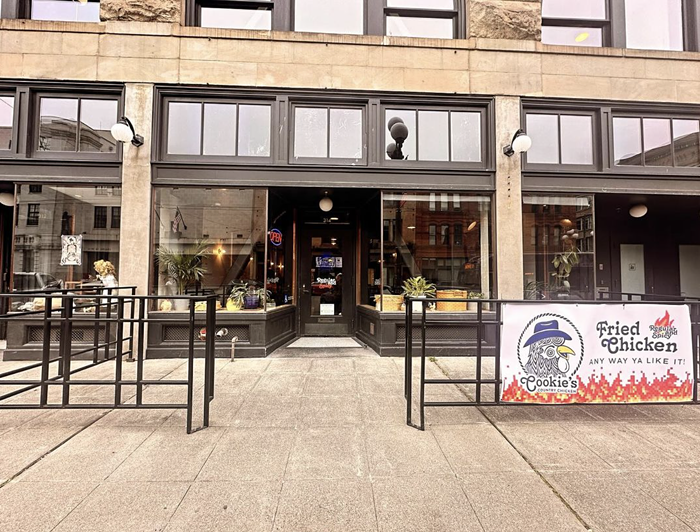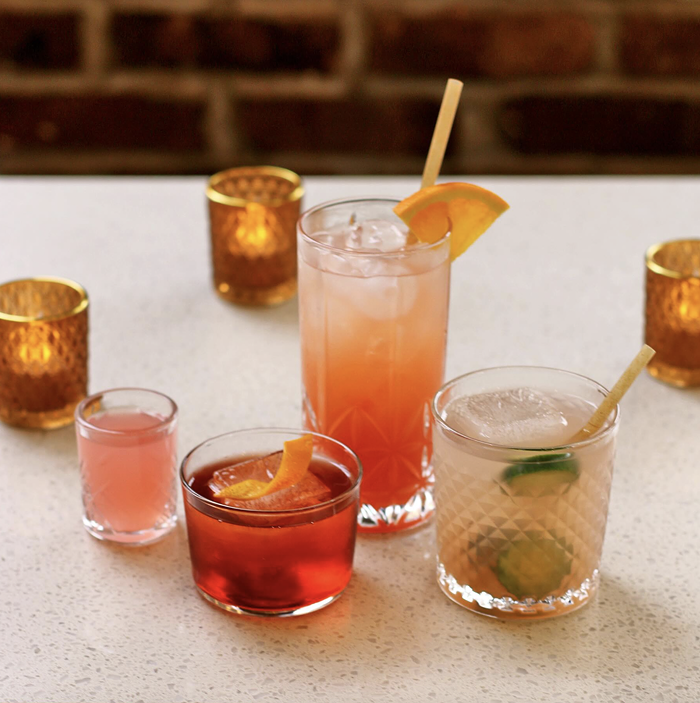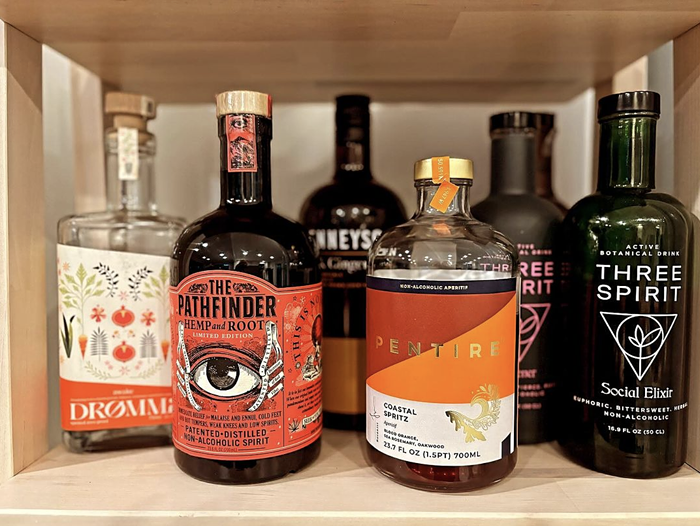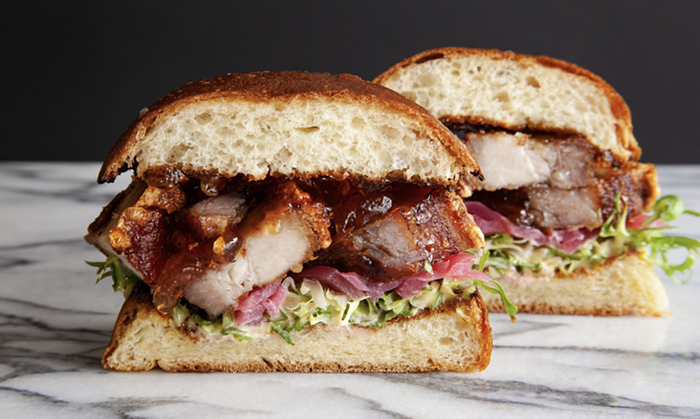And so we come to Independence Day, when Americans turn to thoughts of wieners. Fact (according to a press release received by The Stranger last week about something called "Grillebration," which sounds like an emergency room procedure): Our countrypeople will enjoy seven billion hot dogs between Memorial Day and Labor Day. On July 4th, we will engulf more than 150 million of them. One hundred and fifty million hot dogs: We must all do our part. So as a public service in advance of your patriotic barbecue, we present the 2011 Dyke March Wiener Taste Test.
For the purposes of the test, three representative weenies were selected. (We shall set aside the veggie dogs as a dangerous fringe element.) First, the low: the bottom-shelf supermarket dog. When I was a child, we were fed Bar-S—containing, among other things, unspecified tidbits of pork and beef and mechanically separated chicken, as well as corn syrup (2 percent or less of the latter, the label hastens to reassure). While among a certain set nowadays, serving kids Bar-S would get you reported to Child Protective Services, it claims to be the number-one-selling hot dog in America (with the dubious corollary claim "Only the best is branded Bar-S"). Interpreting the runes on my QFC receipt, it appears that last Saturday, a package of Bar-S Classic Franks was on special for just one dollar. That's 12 cents per dog. TWELVE CENTS. Is this a great country or what? (Or what.)
Then there is what might arguably be called the middle way: Hebrew National, the kosher frank that brags about being all beef (unspecified "premium cuts," riiiight), with no artificial flavors or fillers (animated buns on the website wave protest-style signs about this). It's worth noting, however, that Hebrew National—just like Bar-S—contains 2-percent-or-less of four kinds of sodiums, including our friend nitrate. Furthermore, while Hebrew National touts its "humble beginnings in New York City's turn-of-the-century immigrant neighborhoods," it is now a subsidiary of food giant ConAgra, the Wikipedia page of which—with allegations of environmental irresponsibility, labor issues, health violations, salmonella and E. coli–related product recalls, and delicious, delicious more—truly merits all Americans' attention. The price of Hebrew National beef franks at QFC last Saturday: just about 43 cents each.
Last but not least, and just in time for the taste test, Seattle has a brand-new high-class dog: Rain Shadow Meats' house-made wieners. When I phoned the all-local-meats Capitol Hill butcher to inquire what they sold that was most like a hot dog, they reported that after extensive research and development, they'd just debuted their own—just like a regular hot dog, but made with reduced-guilt-and-ick-factor Carlton Farms pork, Painted Hills beef, "a little bit of ham," and a proprietary spice blend, all inside a lamb casing. Rain Shadow proprietor and great-name-haver Russ Flint said that while he only eats a hot dog once in a blue moon (which is really how often you should be eating a hot dog, America), the people deserve a high-quality option. Rain Shadow's wieners are peachy-colored and pornographically large in both length and girth; they're about a quarter-pound each. Uncooked, they are redolent of traditional baloney. At $6.99 a pound, each weenie will run you about $1.65.
The obvious time to conduct the taste test, as a celebration of all things U.S. of A., was during a friend's annual barbecue along the route of the Seattle Dyke March last Saturday. A gas grill was fired up on the sidewalk; the three kinds of weenies were cooked until nice and hot, with good grill-markage (except the Bar-S, which due to an unforeseen grill hot spot obtained an all-over char to which no one objected). The dogs were ensconced in cheap, squishy buns (the only proper hot-dog conveyance, no matter what Macrina Bakery may offer). The smaller dogs were cut into halves and the Rain Shadow behemoths cut into thirds, as no one in their right mind wants to eat three entire hot dogs; ketchup and yellow mustard were made available, though if utilized, had to be applied to all three samples for test consistency. The dogs were fed, unidentified, to study participants (though without actual blindfolding, as that seemed too complicated). Now: the results.
Bar-S Classic Frank
Most test subjects were administered this weenie first, and the general consensus was that, lacking any basis for comparison, it was completely adequate if "not exciting" (Ben K., attorney). One subject pronounced it "an all-American, delicious hot dog" (sound engineer and education coordinator Jeffery). Small-business-owner Greg theorized that, due to its highly processed look and squishy consistency, the Bar-S sample might be a veggie dog; upon sampling, however, he said, "It tastes like it's real meat." His hypothesis briefly spread, leading Toshi (artist) to say that the dog "looked fake... I don't feel like it's meat." Zac (another artist) reported simply, "It tastes like a hot dog, straight-up." Greg, with the gimlet eye of a capitalist, offered the only real condemnation: "If these were your hot dogs, I wouldn't invest in your business."
Hebrew National Kosher Frank
Several test subjects whose parents were less skinflinty than mine identified this as the taste of childhood. Ben K. got a bit misty-eyed, saying, "It's reminiscent of the classic hot dogs of my youth." It was judged less squishy than Bar-S, as well as saltier; "Salty-delicious," said Sara (arts administrator), while another subject (me, not blind, but whatever) felt it was oversalted (and I like salt). Upon visual inspection, Greg pronounced this dog to have the appearance of real meat; after tasting, it was judged to have better flavor, "a little smoky—good texture—I'm impressed." Jeffery cannily identified it as a kosher dog. "It's real good," he said succinctly.
Rain Shadow Meats' Quality Dog
Well, what do you know? This was hands down the wiener-winner. Jeffery reported (again, cannily) that it had "lots of actual flavor—less like a hot dog, more like a sausage. I feel like the pig was killed within 50 miles of here." Conjecturing about the methodology of the test, Zac said, "I feel like we're going up in quality—maybe it's psychosomatic, but I feel like we went up in meatiness." Ben B. (floor refinisher) admired both the crunch and the spice. And yet the gains in texture and taste were not at the expense of archetypal hot dog flavor; as Sara put it, "Mmmmm—hot dog." Greg liked the looks of both the size and the color, and after one bite said, "This is it. This is the shit. This is in my refrigerator. It tastes like people just cared more, whether it's quality ingredients, craftsmanship—it has more dimension. Someone cared." Informed about the added expense, he opined that if the hot dog was still only a couple bucks, it was entirely worth it—you do get what you pay for. Ben K. concurred, lauding the Rain Shadow dog's "multiple flavor notes." He then summed up the taste test thusly: "Three wieners in my mouth—what a perfect Pride weekend."
Not long after, the Dyke March went by with beating drums, aglow with the fresh legalization of gay marriage in New York and the late-evening sun. March participants wore rainbows and trilby hats and gold lamé shirts and no shirts at all, flashing peace signs and waving. The taste-testers screamed in support until all were hoarse. Is this a great country or what? (Great country!) ![]()
This article has been updated since its original publication.



















